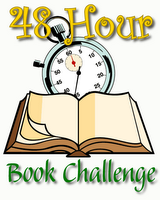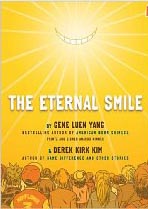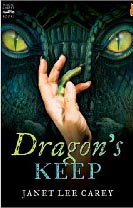 Tonight, Friday night at 10:30 pm, I am officially beginning the 48-hour Book Challenge!
Tonight, Friday night at 10:30 pm, I am officially beginning the 48-hour Book Challenge!
The rules are here on motherreader.com. Basically, in the next 48 hours, I will spend as much time as possible reading and blogging about it.
I’ve been laughing at myself all day for how excited I am about this! You see, whenever I have a special day and try to think of a dream-come-true way of indulging myself, the first thing I think of is ALWAYS to sit around and read all day long. But I ALWAYS conclude, for one reason or other, that it’s not practical, or it’s too lazy, or for some reason or other I just can’t do that.
But it’s all in the marketing: Now it is not laziness, it’s a challenge! Woo-hoo! I am not indulging myself — I am working hard! Okay, the truth is, I AM indulging myself, and I have a wonderful excuse, so I’m not feeling even a little bit guilty! Thank you, MotherReader, for providing the excuse!
What’s more, my blog has been broken for the last three weeks. Just today, I got it working. What’s more, in order to fix it, I had to learn enough about WordPress that now I was able to give the blog the same color scheme and look as my main site, sonderbooks.com. This morning before work, I finished fixing the color scheme to match. For the more than a year that I’ve had the blog, and my three other blogs, I’ve meant to make them look like the main site, but I never got around to figuring out how to do it.
Well, in order to figure out how to fix the problem and upgrade the blog, I had to learn enough about WordPress to adjust the look. I’m really happy with what I ended up with! And I just happened to finish tinkering with it this morning.
What’s more, the challenge happened to hit the only weekend in months and months when I have nothing on the calendar. Yes, I’ll go to church on Sunday. Yes, I’ll write for 15 minutes on Saturday. (I haven’t missed a day of at least 15 minutes writing in 2009!) Yes, I have to take Tim to a group project meeting on Sunday. But the cool part is that I can listen to an audiobook on the way there, and read while I am waiting for him to finish! It will simply provide a change of scenery.
The clear schedule is so rare as to almost be miraculous. Definitely a Sign. I HAD to do this!
I also have a STACK of books to review, since the blog was down for three weeks. It doesn’t really say in the rules, but I’m assuming that time spent “blogging” includes time writing reviews of books you’ve already read. So I’m going to spend time reading, and break it up by writing reviews, and maybe just maybe I can catch up!
Along with updating the look, I also had been toying with the idea of converting my site to a blog only. Well, the blog breaking convinced me that I don’t want to do that. But I think I will make more of the blog — with personal entries like this one about being a reader and a writer and a librarian and a blogger. I’m going to start thinking of sonderbooks.com as an archive of the book reviews. It is arranged by type of book, so is a good resource for finding books to read.
There was one problem with the upgrade. The one thing left that doesn’t work is the “Pretty Permalinks.” So now none of the links from sonderbooks.com to the blog will work. I will need to go in and change those, but I can do that, eventually. In the meantime, if a link to the blog doesn’t work, go to the blog’s main page and then do a search in the blog for the book you want.
I’m also very excited about getting involved in the Kidlit blogging community, the Kidlitosphere. Technically, mine isn’t just a Kidlit blog, since I also review books for adults. But I’m a Youth Services Librarian, and I definitely have an emphasis on YA and children’s books.
Well, why am I spending all this time explaining myself when I could be reading?
Here goes!!! Woo-hoo!!! Woo-hoo!!



